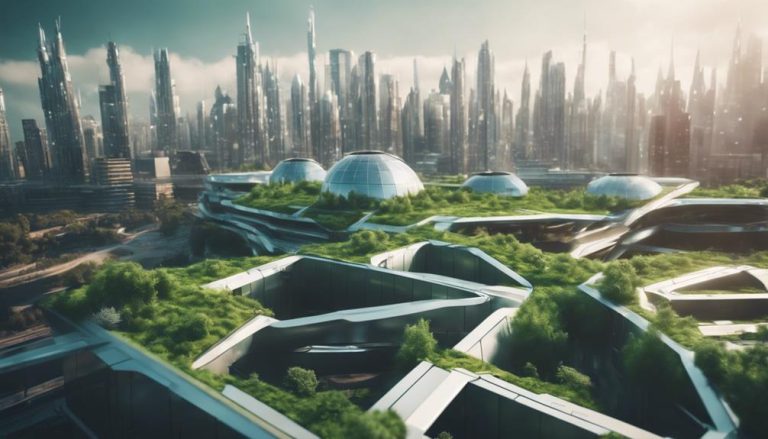
Building for the Future: Exploring the Benefits of Steel Structures
Steel structures are celebrated for their robust strength and durability, with the ability to withstand heavy loads and harsh weather conditions. Additionally, they require minimal maintenance, which results in significant long-term cost savings. Steel’s resistance to corrosion guarantees lasting integrity, making steel buildings a wise investment for the future. The cost-efficiency of steel construction is marked by reduced labor costs, faster project completion, and innovative design possibilities. Moreover, steel’s sustainability and environmental benefits contribute to a greener world. The promising future of steel in construction is driven by advancements that prioritize efficiency, sustainability, and speed.
Key Takeaways
- Steel structures offer exceptional strength, durability, and resilience to extreme weather conditions.
- Cost-efficient construction with steel due to reduced labor costs and quick project completion.
- Steel structures provide unparalleled design flexibility, allowing for innovative concepts and easy modifications.
- Steel is a sustainable choice, reducing energy consumption, promoting eco-conscious projects, and being recyclable.
- Speed of construction advantages with pre-fabricated components and modular steel elements, driving popularity in building projects.
Strength and Durability
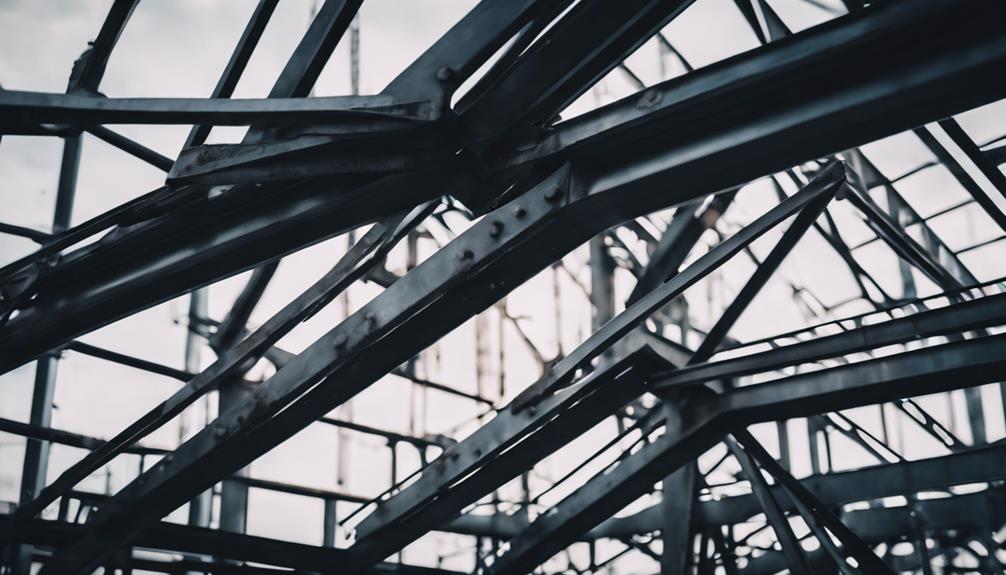
Steel structures are renowned for their exceptional strength and durability, making them a preferred choice for a wide range of construction projects. The ability of steel structures to support large loads and withstand extreme weather conditions highlights their durability and reliability. This durability translates into minimal maintenance requirements, leading to significant long-term cost savings for property owners.
In the domain of high-rise buildings, where safety and structural integrity are paramount, steel’s strength and durability shine. Steel’s resilience to corrosion and wear further solidify its position as a reliable choice for long-lasting structures that maintain their integrity over time. Compared to traditional building materials, steel buildings are known for their exceptional longevity, ensuring a robust and durable construction that stands the test of time.
The inherent strength of steel allows for innovative architectural designs in high-rise buildings, providing both aesthetic appeal and structural soundness. Steel structures truly embody the marriage of durability and design excellence in the construction industry.
Cost Efficiency in Construction
Highlighting the financial advantages of utilizing steel structures in construction projects, cost efficiency becomes a prominent consideration in optimizing overall expenses and project timelines. Steel structure buildings offer significant cost savings due to reduced labor costs resulting from the use of pre-fabricated components during the steel structure fabrication process.
The construction efficiency achieved with steel structures leads to quicker project completion, thereby minimizing overall expenses. Additionally, the lightweight yet strong properties of steel result in smaller foundation requirements, further reducing construction costs. Pre-engineered steel structures stand out as cost-effective solutions, providing substantial savings in both time and overall construction expenses.
Design Flexibility and Versatility
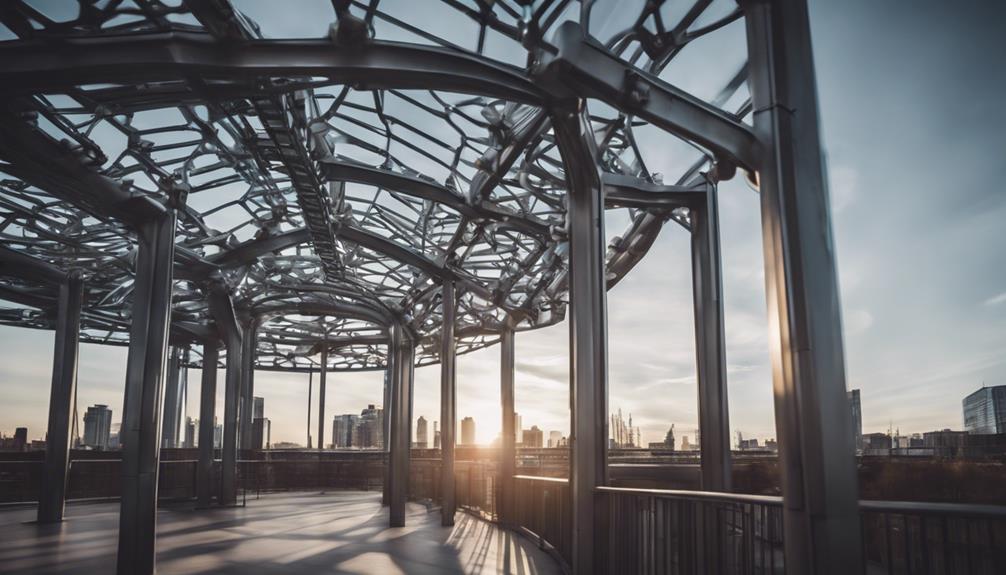
Demonstrating a remarkable adaptability to various architectural styles and shapes, steel structures offer unparalleled design flexibility and versatility in construction projects. The inherent properties of steel allow for the creation of buildings that can easily accommodate different design requirements.
Steel structure design benefits from the material’s strength-to-weight ratio, enabling architects to explore innovative concepts such as longer spans and open floor plans. The versatility of steel structure frames facilitates the modification and expansion of buildings, providing a cost-effective solution for future adaptations.
Additionally, technological advancements in steel construction have expanded design possibilities, empowering architects to push the boundaries of creativity. From sleek curves to sharp angles, steel structures enable the realization of unique architectural visions.
The flexibility and versatility of steel in design not only enhance the aesthetic appeal of buildings but also contribute to their functionality and longevity, making steel a preferred choice for modern construction projects.
Sustainability and Environmental Benefits
An exploration of the environmental advantages offered by steel structures reveals their significant contribution to sustainable construction practices. Steel structures play an important role in promoting environmental responsibility by reducing energy consumption, minimizing waste generation, and lowering greenhouse gas emissions during the construction phase.
The recyclability of steel, without any loss of quality, positions it as an ideal choice for eco-conscious projects, thereby contributing to a greener world. Additionally, the long lifespan of steel structures results in reduced resource consumption and waste, as they require less frequent renovations compared to structures made from other materials.
Speed of Construction Advantages
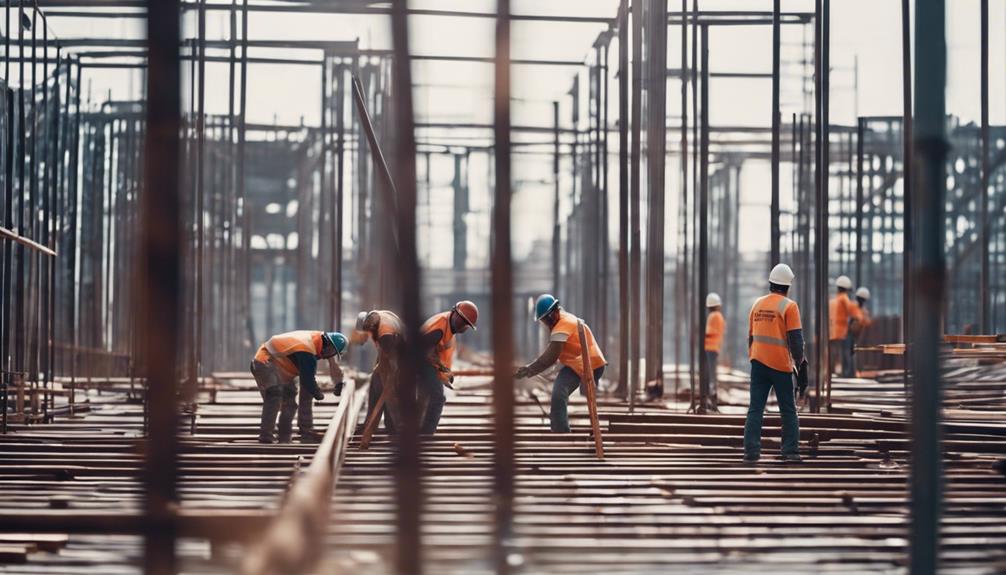
Steel construction’s efficiency in project completion is greatly enhanced by the speed at which pre-fabricated components can be assembled on-site. This method allows for faster project completion compared to traditional construction techniques.
The use of pre-engineered steel structures enables quick assembly on-site, markedly reducing construction timelines. In 2019, the pre-engineered buildings market was estimated at US$ 14.5 billion, showcasing the growing preference for steel due to its time-saving advantages.
Modular steel components further contribute to streamlined assembly processes, enhancing construction efficiency and reducing on-site labor time. The speed of construction offered by steel structures is a key driver of its increasing popularity as the material of choice for future building projects.
Fire Resistance and Safety Measures
The fire resistance and safety measures inherent in Steel Structures contribute greatly to their widespread adoption in construction projects, particularly in environments where safety is paramount. Steel structures boast a high fire resistance rating owing to their non-combustible nature, making them a secure choice for various construction applications. Additionally, the application of fire-resistant coatings and intumescent paints can further enhance the fire safety of steel structures, providing protection in the event of a fire outbreak.
Steel’s inherent durability and strength enable it to maintain structural integrity even when exposed to high temperatures, which is important for ensuring overall safety within buildings. Implementing proper fire protection measures, including the use of fireproofing materials and careful design considerations, can greatly bolster the fire resistance of steel structures. As a result, steel is often the preferred material for buildings where safety is a top priority, such as high-rise structures and commercial complexes, due to its exceptional fire resistance properties.
Comparing Steel With Other Materials
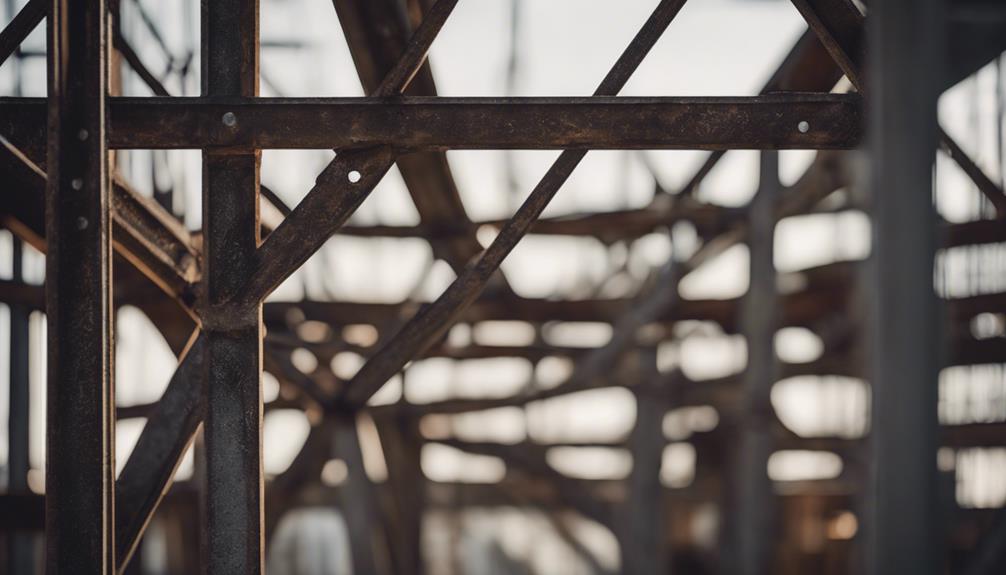
When evaluating construction materials for building projects, steel stands out as a superior choice due to its unmatched strength, durability, and versatility compared to other traditional options.
Steel’s strength-to-weight ratio surpasses that of concrete, enabling the creation of lighter structures that are still incredibly robust. Unlike wood, steel requires minimal maintenance and offers superior fire resistance, ensuring the longevity and safety of the building.
Additionally, steel provides more structural strength and flexibility than brick, making it a versatile and durable material for construction projects. Its universal application regarding strength, speed of construction, flexibility, and sustainability further solidifies steel as a top choice for builders.
In large-scale projects, steel guarantees safety, reliability, and longevity, outperforming other traditional building materials. These characteristics make steel a preferred option for those seeking a combination of strength, durability, and efficiency in their construction endeavors.
The Future of Steel in Construction
With the ongoing advancements in technology and fabrication methods, the steel construction industry is poised to revolutionize the future of construction projects worldwide. In India, the structural steel tube market is forecasted to experience significant growth, with projections indicating an increase from 4.2 MnT to 16 MnT by 2030.
Companies like APL Apollo are actively working towards reducing emissions, aiming for a 25% decrease per metric ton of steel produced by the same year. Steel structures continue to demonstrate their superiority in strength, durability, and resistance to environmental factors compared to concrete, further driving their popularity.
The pre-engineered buildings market, valued at US$ 14.5 billion in 2019, showcases the increasing preference for steel construction methods. Additionally, advancements in technology and fabrication techniques are not only fostering innovative designs but also leading to quicker construction timelines within the steel construction sector.
The future of steel in construction appears promising, with sustainability and efficiency at the forefront of industry developments.
Frequently Asked Questions
What Are the Benefits of Structural Steel in Construction?
Structural steel in construction offers unparalleled strength, durability, and resilience. Its high strength-to-weight ratio allows for innovative designs. Steel structures require less maintenance, have faster construction timelines, and are highly recyclable, aligning with sustainability goals in projects.
Why Is Steel Good for Building?
Steel is an excellent building material due to its superior strength, durability, and recyclability. It requires less maintenance, offers quicker construction timelines, and can withstand harsh conditions, making it a cost-effective and reliable choice for construction projects.
What Is the Role of Steel in Building Construction?
Steel in building construction is essential for providing superior strength, durability, and resilience. Its role lies in offering design flexibility, versatility, and faster construction timelines, ultimately leading to cost savings and efficient project completion.
Why Is Steel Important in Modern Architecture?
Steel is crucial in modern architecture for its exceptional strength, durability, and versatility. Its high strength-to-weight ratio allows for cost-effective, resilient designs. Steel structures offer quick construction, design flexibility, and long-term sustainability, making them indispensable in architectural innovation.
Conclusion
To sum up, steel structures offer numerous benefits in construction, including:
- Strength
- Durability
- Cost efficiency
- Design flexibility
- Sustainability
- Speed of construction
- Fire resistance
- Safety
Comparing steel with other materials highlights its advantages in various aspects.
The future of steel in construction looks promising as it continues to be a popular choice for building projects due to its many advantageous properties.
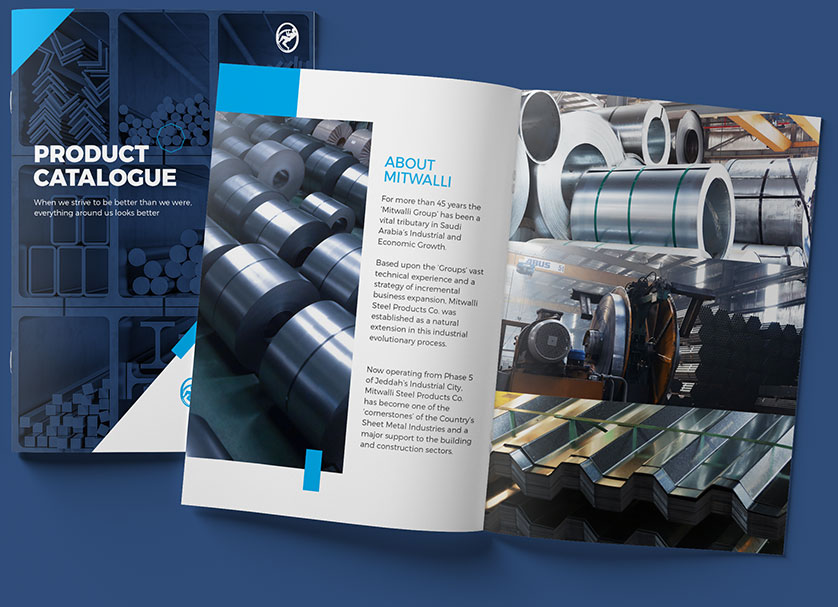
Add New Comment
Deprecated: File Theme without comments.php is deprecated since version 3.0.0 with no alternative available. Please include a comments.php template in your theme. in /home/wwwmsp/public_html/wp-includes/functions.php on line 6121